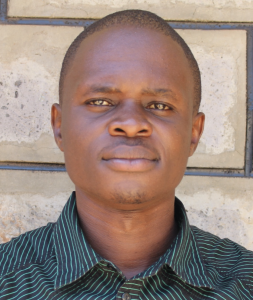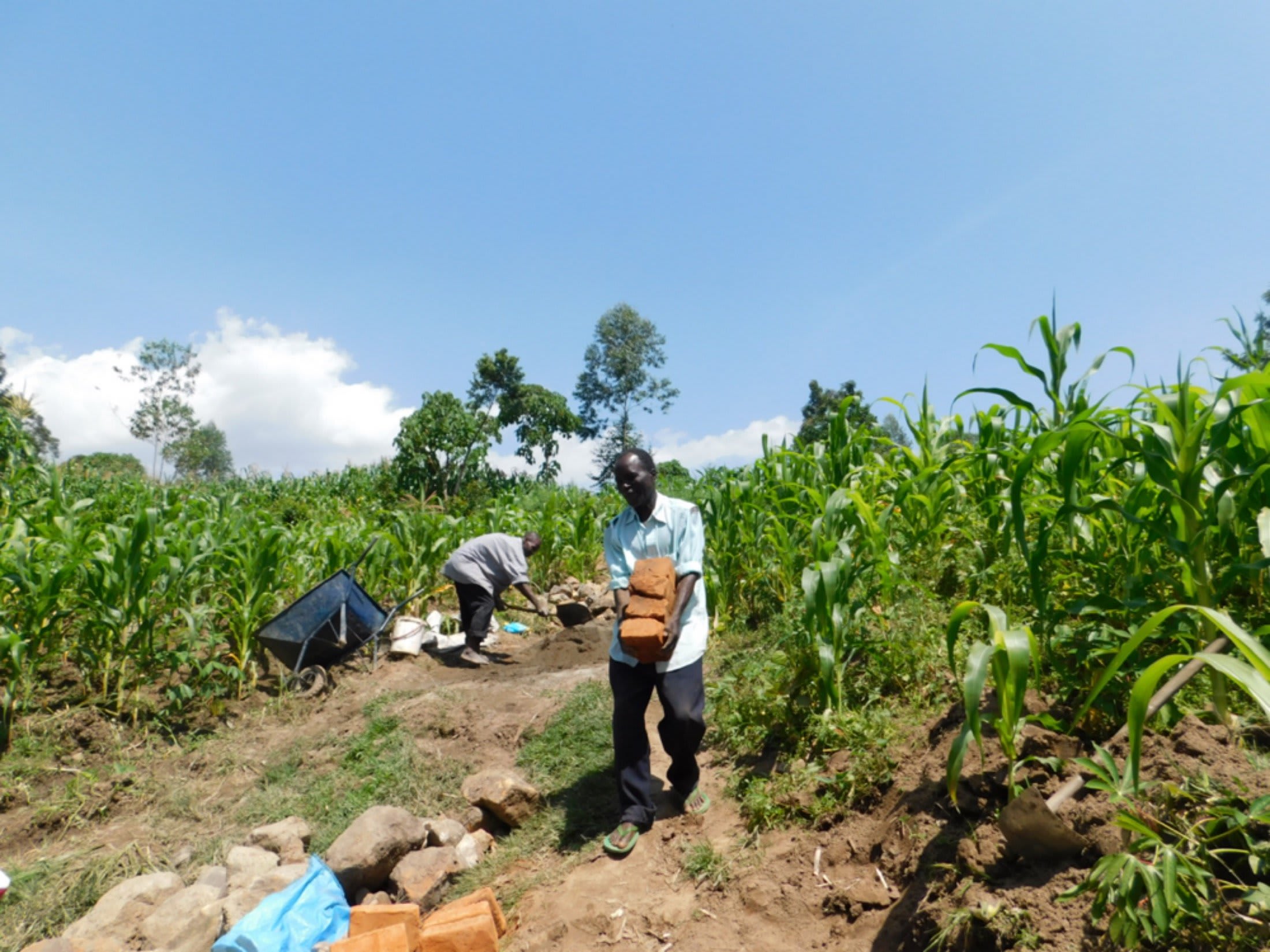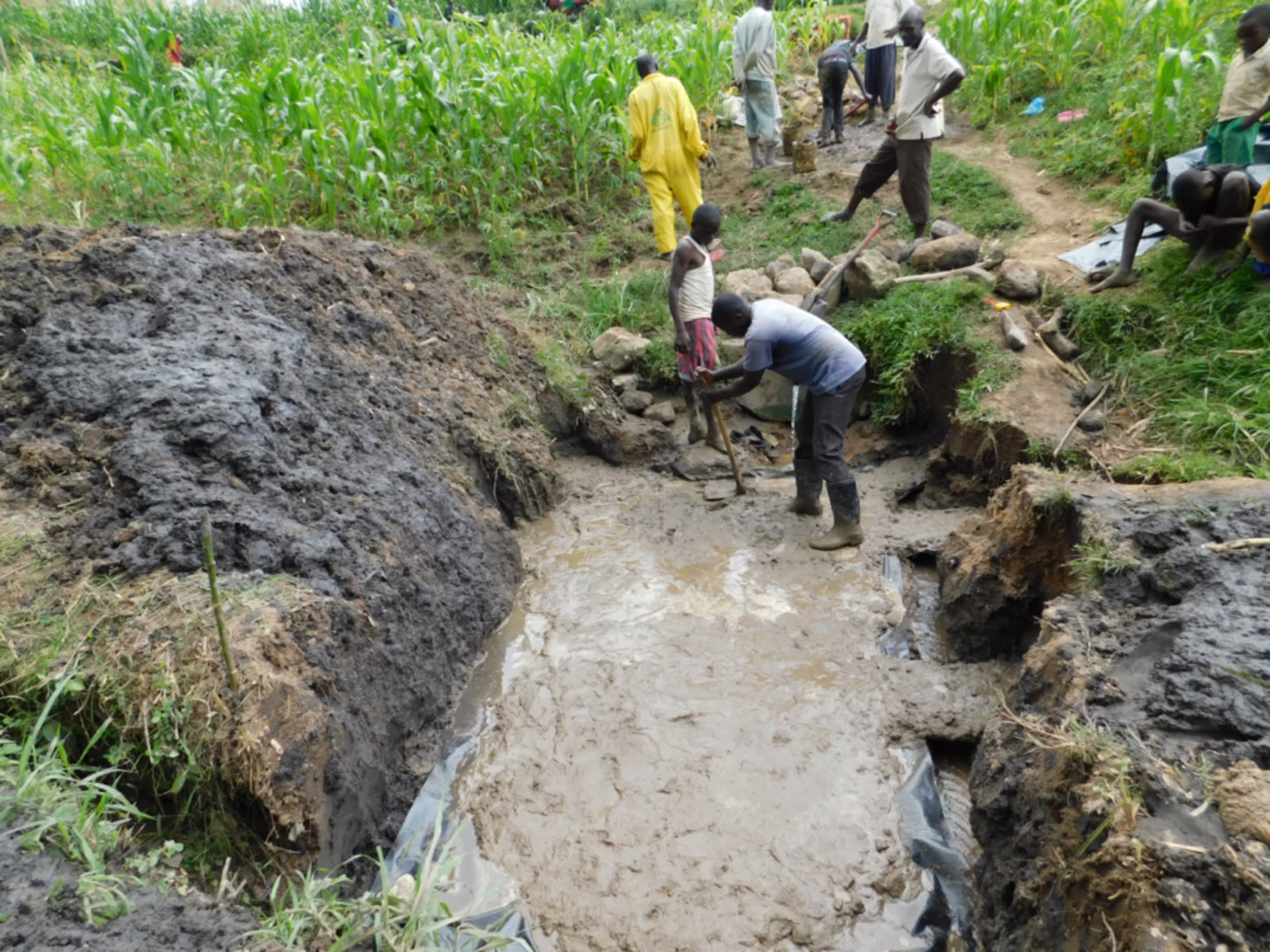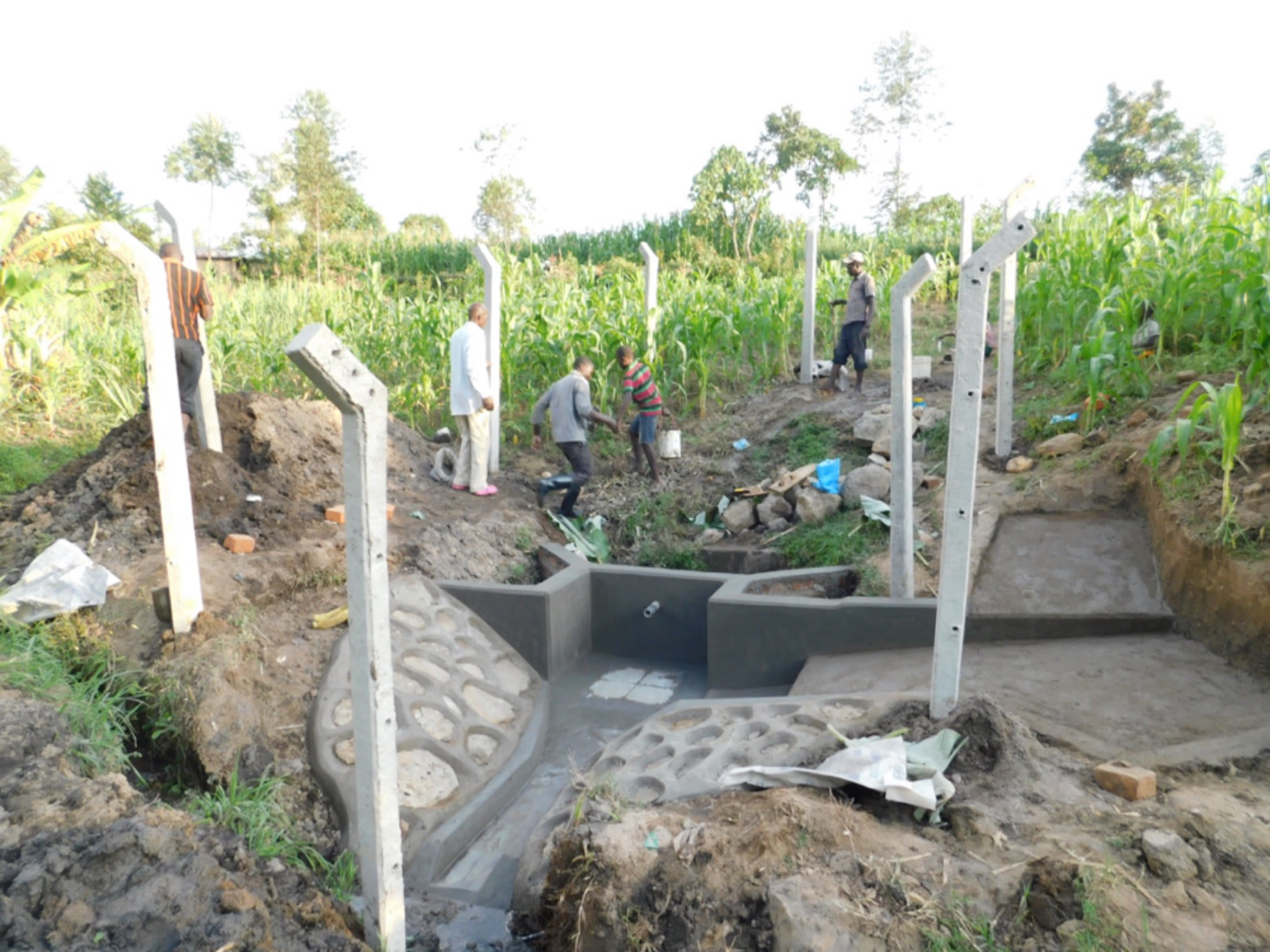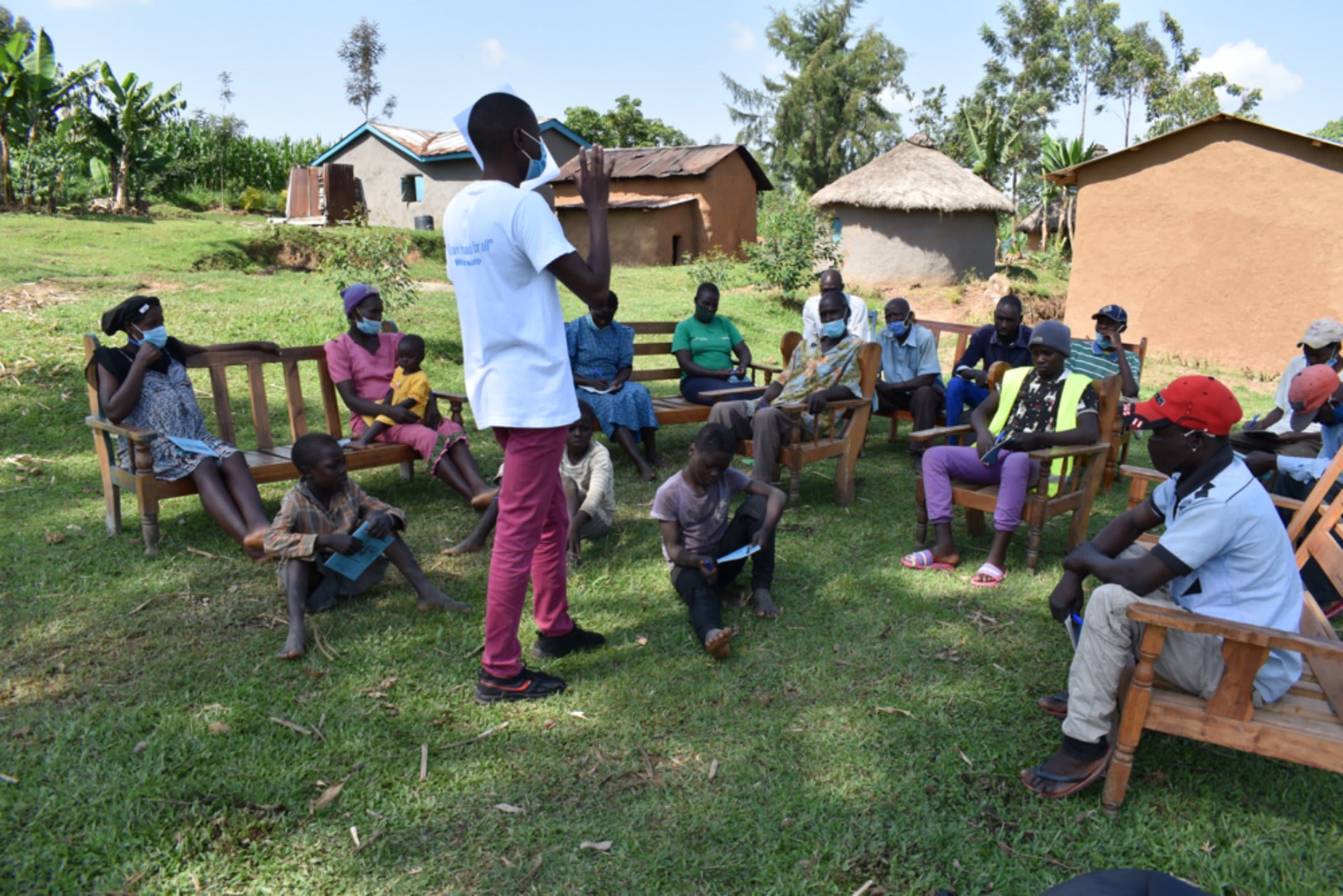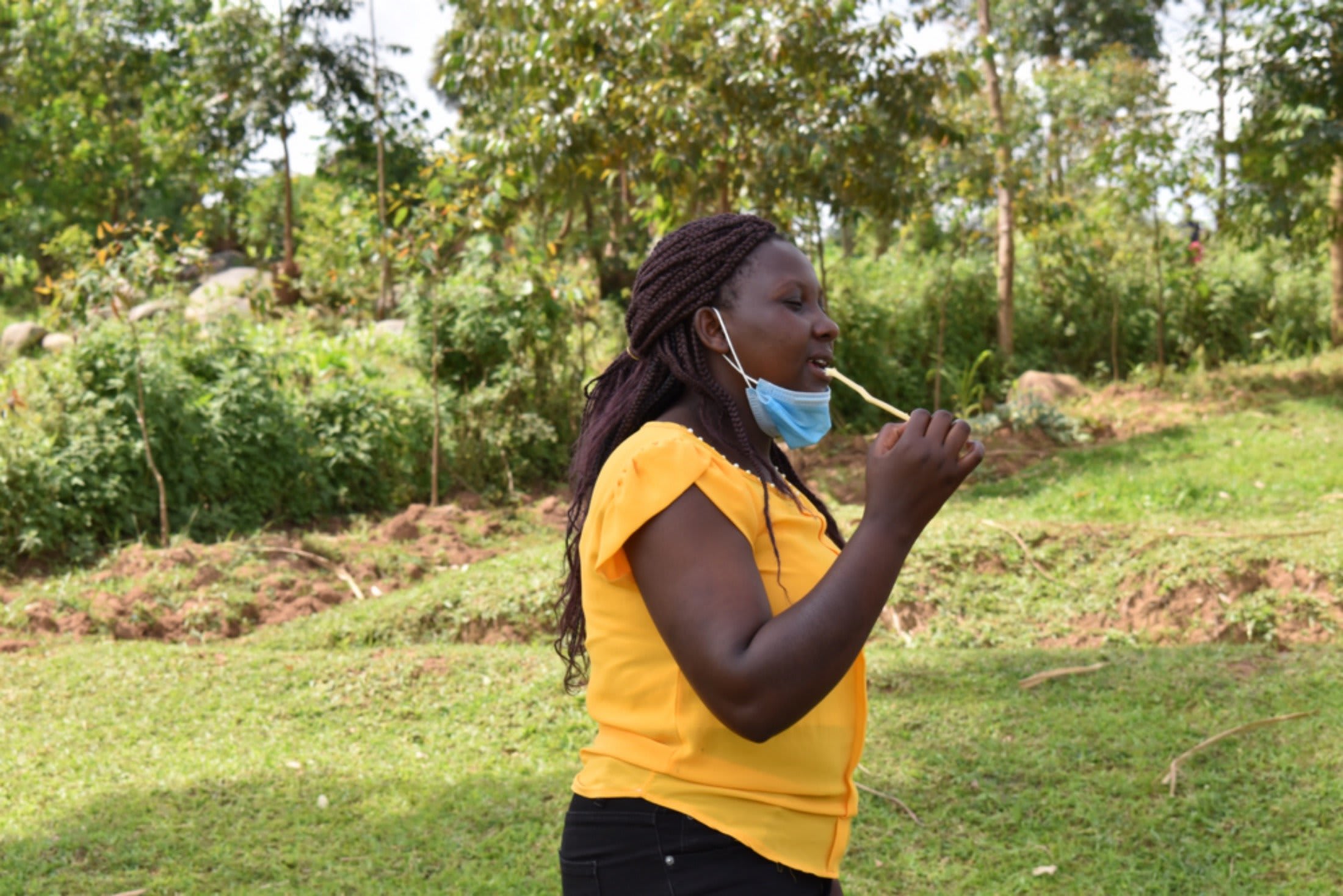Shianda village is based on a rural set-up. A majority of the community members here are farmers who practice large-scale sugarcane farming. A few people are employed as casual laborers at the West Kenya Sugar Factory while others are engaged in running small businesses in the village and nearby town. Compared to their neighbors, the Shianda community enjoys an electricity connection thanks to their area member of the county assembly, who has contributed to this development project. Most roads here are easily accessible.
320 people in Shianda depend on Akhonya Spring for water as their only year-round water source in the area. Community members once tried to protect the spring on their own, but without the materials or technical expertise needed, they were unsuccessful. Today, just a small cement wall that holds a discharge pipe stands at the water point, missing many of the key features and their benefits of a full spring protection.
Though the pipe helps direct water into community members' jerrycans, a lot of the spring's natural yield escapes around the wall and seeps through the earth because the spring's catchment area has not been fully tapped and concentrated. This causes a slower discharge than is expected with this spring, slowing community members down as they fetch water.
The current discharge speed leads to overcrowding at the water point and a lot of wasted time for both adults and children. Weekends and holidays at the spring are especially busy when kids are home from school and they are assigned to help their parents with more tasks throughout the day, including fetching water.
The area leading up to the spring is a fairly steep slope, which becomes slick with mud during the frequent and heavy rains. Without stairs guiding the path to the spring, people sometimes fall and slip as they try to leave carrying water. Once at the water point, there are just a few large stones community members placed to try to help them stay above the constant pool of water below the pipe. The water collects due to a nonfunctional drainage system.
But the rocks are also slippery with moss and algae, and they do not guarantee safe footing. Some community members, particularly the elderly, women who are pregnant, and the youngest children, find the spring so difficult to access that they must forego it altogether, relying on others to help meet their needs. Everyone is burdened by the spring's lack of accessibility, one way or another.
"With the terrain, I find it a challenge accessing the water point, especially when it rains. The area is slippery which normally prohibits me from accessing the spring for fear of injuring myself," said Gift, a young primary school-aged girl.
The spring's water is open to contamination mostly carried in by the rains' surface runoff. Because the spring is open behind the cement wall, dirty water runs straight down the hill and through the pipe. Pollutants include farm chemicals, animal waste residues, and soil. Drinking the contaminated water leads to infections such as typhoid and cholera, community members report, among other waterborne diseases.
"Currently, water from our spring is not fit for drinking. Personally, I have had sore throat complications and this I relate to the spring waters. Protection of the spring will allow members to access clean safe water at any given time," said 34-year-old businessperson, farmer, and mother Christine Imbili.
Water-related illnesses are costly to treat, and they prevent other productive activities. Adults miss work and kids have to stay home from school, often falling behind in their lessons.
What We Can Do:
Spring Protection
Protecting the spring will help provide access to cleaner and safer water and reduce the time people have to spend to fetch it. Construction will keep surface runoff and other contaminants out of the water. With the community’s high involvement in the process, there should be a good sense of responsibility and ownership for the new clean water source.
Fetching water is a task predominantly carried out by women and young girls. Protecting the spring and offering training and support will, therefore, help empower the female members of the community by freeing up more of their time and energy to engage and invest in income-generating activities and their education.
Training on Health, Hygiene, COVID-19, and More
To hold trainings during the pandemic, we work closely with both community leaders and the local government to approve small groups to attend training. We ask community leaders to invite a select yet representative group of people to attend training who will then act as ambassadors to the rest of the community to share what they learn. We also communicate our expectations of physical distancing and wearing masks for all who choose to attend.
The training will focus on improved hygiene, health, and sanitation habits in this community. We will also have a dedicated session on COVID-19 symptoms, transmission routes, and prevention best practices.
With the community’s input, we will identify key leverage points where they can alter their practices at the personal, household, and community levels to affect change. This training will help to ensure participants have the knowledge they need about healthy practices and their importance to make the most of their water point as soon as water is flowing.
Our team of facilitators will use a variety of methods to train community members. Some of these methods include participatory hygiene and sanitation transformation, asset-based community development, group discussions, handouts, and demonstrations at the spring.
One of the most important issues we plan to cover is the handling, storage, and treatment of water. Having a clean water source will be extremely helpful, but it is useless if water gets contaminated by the time it is consumed. We and the community strongly believe that all of these components will work together to improve living standards here, which will help to unlock the potential for these community members to live better, healthier lives.
We will then conduct a small series of follow-up trainings before transitioning to our regularly scheduled support visits throughout the year.
Training will result in the formation of a water user committee, elected by their peers, that will oversee the operations and maintenance of the spring. The committee will enforce proper behavior around the spring and delegate tasks that will help preserve the site, such as building a fence and digging proper drainage channels. The fence will keep out destructive animals and unwanted waste, and the drainage will keep the area’s mosquito population at a minimum.

 Protected Spring
Protected Spring
 Rehabilitation Project
Rehabilitation Project








